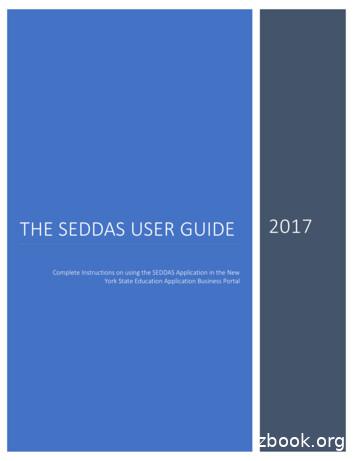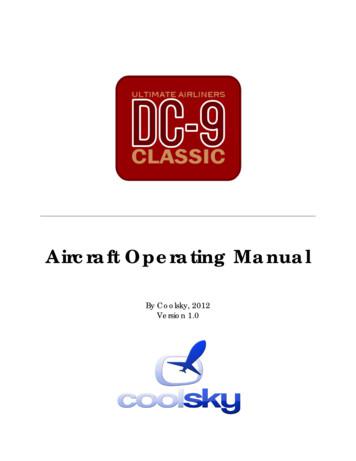Section 13-1 & 13-2 Introducing Ecology
Section 13-1 & 13-2“IntroducingEcology”
13.1 Ecologists Study Relationships / 13.2 Biotic & AbioticObjectivesStudents will be able to:1.Summarize the levels of organizationthat ecologists study by completing agraphic organizer and writing a shortparagraph in their own words.
13.1 Ecologists Study Relationships / 13.2 Biotic & AbioticSection 13.1 KEY CONCEPT:Ecology is the study of the relationshipsamong organisms and their environment.
Ecology is the study of theinteractions among living things,and between living things andtheir surroundings.
An organism is anindividual living thing(such as an alligator)OrganismOrganism
A population is a groupof the same speciesthat lives in one area.PopulationPopulationOrganismOrganism
13.1 Ecologists Study Relationships / 13.2 Biotic & Abiotic A community is a groupof different species thatlive together in one mOrganism
13.1 Ecologists Study Relationships / 13.2 Biotic & AbioticWhat level of organizationdescribes a flock of pigeons in apark?Population
An ecosystem includes all ofthe organisms as well as theother nonliving things in agiven area. (such as climate, Ecosystemsoil, water, ionOrganismOrganism
13.1 Ecologists Study Relationships / 13.2 Biotic & AbioticCan you list the nonliving thingsin this ecosystem?
A biome is a major regional or globalcommunity of organismscharacterized by the climateconditions and plant communitiesthat thrive ulationPopulationOrganismOrganism
Fill in the power notes 13.1 Levels of ityPopulationPopulationOrganismOrganism
13.1 Ecologists Study Relationships / 13.2 Biotic & AbioticBIOMES
13.1 Ecologists Study Relationships / 13.2 Biotic & e
13.1 Ecologists Study Relationships / 13.2 Biotic & AbioticSummarize the levels of organizationby completing the graphic organizerusing your Power Notes.
Fill in the power notes 13.1 Levels of OrganizationOrganismPopulationPage 2EcosystemCommunityBiome
13.1 Ecologists Study Relationships / 13.2 Biotic & AbioticPractical ApplicationFollow Mr. Benitez.
13.1 Ecologists Study Relationships / 13.2 Biotic & AbioticSection 13.2 KEY CONCEPT:Every ecosystem includesboth living and nonlivingfactors.
13.1 Ecologists Study Relationships / 13.2 Biotic & AbioticObjectivesStudents will be able to:1.Identify biotic and abiotic factors in an ecosystem bycompleting a graphic organizer and writing a shortparagraph in their own words.2.Describe how a change in one factor in an ecosystemcan affect others by completing a graphic organizer andwriting a short paragraph in their own words.
Biotic factors are living things. Remember, BIO means LIFE! a
Abiotic factors are nonliving things. Remember, “A” means NOT (likeAsymmetrical means not sture– Water, rain, clouds–soil
Changing one factor in an ecosystemcan affect many other factors. A keystone species is a species thathas an unusually large effect on itsecosystem.KeystoneIf you moved this stone thewhole arch would fall down
13.1 Ecologists Study Relationships / 13.2 Biotic & AbioticA keystone species is a plant or animal that plays aunique and crucial role in the way an ecosystemfunctions.Without keystone species, the ecosystem would bedramatically different or cease to exist altogether.Example: Wolves: Being a top predator, wolves areimportant in many habitats. Wolves keep deerpopulations in check and too many deer will eatsmall trees, which leads to fewer trees. In turn, therewould be fewer birds and beavers and the wholeecosystem would change.
Keystone species form andmaintain a complex web oflife.creation ofwetlandecosystemincreased waterfowlPopulationkeystone speciesincreasedfishpopulationnestingsites forbirds
the variety ofliving things inan ecosystema species that plays acritical role inmaintaining thestructure of anecological community
Listen, look fill in as we go – there will be a checkyour answer slide at end of sectionBiotic(living sturetemperaturesoil
13.1 Ecologists Study Relationships / 13.2 Biotic & Abiotic
Listen and fill in Research Methodsas we go thereincludewill be a checkyour answersplace at the end.
Listen, look fill in as we go – there will be a checkyour answer slide at end of section
13.1 Ecologists Study Relationships / 13.2 Biotic & Abiotic A keystone species is a plant or animal that plays a unique and crucial role in the way an ecosystem functions. Without keystone species, the ecosystem woul
To the Reader: Why Use This Book? vii Section 1 About the Systems Archetypes 1 Section 2 Fixes That Fail 7 Section 3 Shifting the Burden 25 Section 4 Limits to Success 43 Section 5 Drifting Goals 61 Section 6 Growth and Underinvestment 73 Section 7 Success to the Successful 87 Section 8 Escalation 99 Section 9 Tragedy of the Commons 111 Section 10 Using Archetypal Structures 127
table of contents cover 1 table of contents 2 section 1 – contact information 3 section 2 – facilities 4 section 2.1 – front of house / seating chart 4 section 2.2 – backstage facilities 5 section 3 – stage information 6 section 3.1 – stage 6 section 3.2 – fly system 8 section 3.3 – lineset schedule 8 section 4 – lighting 9 section 4.1 – lighting plot 10
THE SEDDAS USER GUIDE . Index. Section 1: Overview Section 2: Search for User Section 3: Create User ID Section 4: Reassign Institution Section 5: Advanced Search Section 6: Update User Section 7: Disable User ID. Section 8: Reactivate User ID Section 9: Reset Password and Unlock Account Section 10: Entitlements-Overview
section 711 -- steel structures section 712 -- timber structures section 713 -- temporary bridges and approaches section 714 -- concrete culverts and retaining walls section 715 -- pipe culverts, and storm and sanitary sewers section 716 -- jacked pipe section 717 -- structural plate pipe, pipe -arches, and arches section 718 -- underdrains
Section DA: Dampers and Louvers Section SA: Ductwork Section HA: Housings Section RA: Refrigeration Equipment Section CA: Conditioning Equipment Section FA: Moisture Separators Section FB: Medium Efficiency Filters Section FC: HEPA Filters Section FD: Type II Adsorber Cells Section FE: Type III Adsorbers 11
PROPERTY AND CASUALTY INSURANCE GUARANTY ASSOCIATION MODEL ACT . Table of Contents. Section 1. Title . Section 2. Purpose . Section 3. Scope . Section 4. Construction . Section 5. Definitions . Section 6. Creation of the Association . Section 7. Board of Directors . Section 8. Powers and Duties of the Association . Section 9. Plan of Operation .
dc-9 classic – aom table of contents dc-9 classic – aircraft operating manual coolsky, 2012. sections section 1: emergency section 2: limitations section 3: normal operating procedures section 4: planning & performance section 5: aircraft general section 6: ice & rain protection section 7: electrical section 8: fire protection section 9 .
Section 1: What is a Poem? Section 2: Sound Effect Words Section 3: Same Sound Words Section 4: Acrostic Poems E310 Chapter 1: Writing a Narrative Section 1: Finding a Topic Section 2: Finding a Beginning Section 3: Important Elements of Narrative Section 4: Ending a Narrative Chapter 2: Rewriting Section 1: Trimming and Adding























